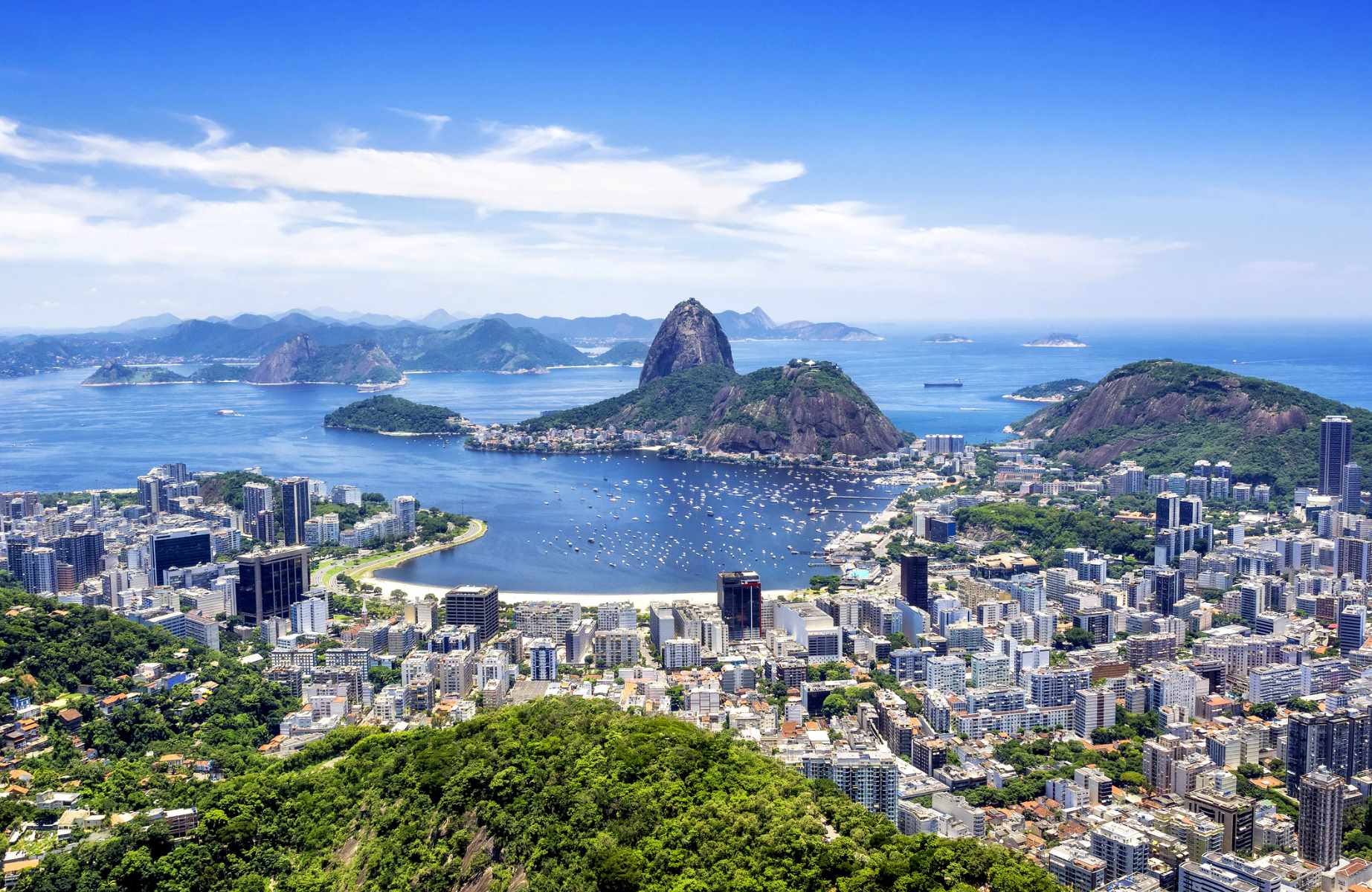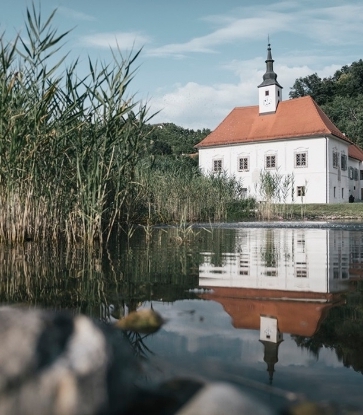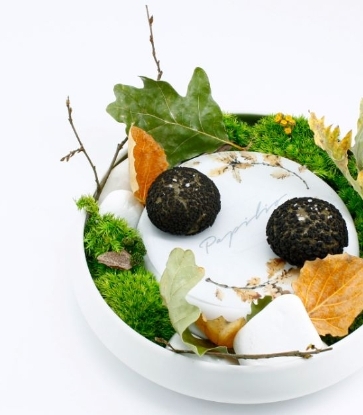When planning a short tip abroad, many travellers’ first thought is to head straight for the big cities. Full to the brim with people and activities, it seems a logical and undoubtedly fun choice – but there are so many treasures hiding in overlooked rural areas around the world. So it is with Estonia and the beautiful island of Muhu, a captivating destination that combines lush greenery with a refreshing sea breeze.
Located just off Estonia’s west coast, Muhu Island is part of the West Estonian Archipelago and at 198km squared is the third-largest of the islands. While Saaremaa and Hiiumaa may beat Muhu in terms of size, the latter can proudly say that is the only one of the islands that is home to a Michelin-recommended restaurant – and a Michelin-approved hotel too! Pädaste Manor and its restaurant, Alexander, offer the perfect opportunity for a luxury getaway that allows you to explore Muhu, the island where time rests.
To reach this tranquil paradise from mainland Estonia, head for the port of Virtsu. From here, you can drive straight onto the ferry that will take you over to the harbour at Kuivastu on Muhu Island. Whilst it is a short trip (around 30 minutes), there’s still time to get out of the car, head up to the deck and take in a deep breath of Baltic Sea air. When you reach Kuivastu, simply drive off the ferry and Muhu Island is ready and waiting for you to discover.

If you were to choose one word to describe Muhu Island, there’s a decent chance you would land on ‘natural’. The entire West Estonian Archipelago is a UNESCO Biosphere Reserve, owing in part to the forests that cover it. Nature buffs may be interested to know that the islands’ climate sits in a ‘transition zone’ where both needle-leaf and broad-leaf trees can flourish. This means that when wandering Muhu and the other islands you will see plenty of pine forests and juniper groves but also deciduous trees – as well as mixed forests that contain both varieties.
With only 2,000 inhabitants, Muhu Island is a sparsely populated place where nature takes centre stage. Long walks in its forests are a must for nature lovers, as is exploring diverse plant life. For hikers, the north-eastern coast is a prime location and features several coastal bluffs, among which Üügu Bluff is one of the most popular to visit. It has been suggested that Muhu Island’s location also makes it a good place from which to see the northern lights.
‘Peaceful’ might be another adjective commonly heard when talking about Muhu Island. It’s sometimes seen just as a stepping stone between Saaremaa and the mainland, but it would be foolish to ignore Muhu’s own charms and joyful tranquillity. Some people refer to it as a place where time has – and continues to – stand still, both for the serene atmosphere and the fact that it appears untouched and unbothered by the outside world. There are no modern skyscrapers here, only a gratifyingly green land that has an innate simplicity to its charms, where you feel blissfully cut off not just from mainland Estonia but from the world.

If ‘natural’ and ‘peaceful’ are the key words when discussing Muhu Island as a whole, then when it comes to Pädaste Manor, it is the ‘manor’ part that seems most appropriate. On an island with relatively few buildings of any kind, the sight of this fine country retreat is quite something. Bordered by forest on one side and a manicured lawn on the other, it immediately suggests a wonderful balm for the soul. The hotel looks every inch a verdant relaxing idyll – and that’s in a destination that’s already idyllic to begin with.
The seaside estate dates back five hundred years, to the 14th Century, with some of the house’s original walls now buried deep in the heart of the building following an extension towards the end of the 19th Century. The 14 bedrooms in the main house reflect the age of the property perfectly, being elegant and luxurious in a time-honoured way. The Superior Junior suites and the Grand Suite also come with open fireplaces and a daily supply of firewood, making them the perfect place to cosy up in the cooler months – while the views over the parklands and out to sea are a hit every day of the year. For the romantically inclined, Room No. 15 comes with a Poetry Loft; climb the farmer’s ladder to the mezzanine level, pick something from their collection and cuddle up beneath the stars.
Once host to the Baron’s horses and caleches, the carefully restored Carriage House provides a further 9 bedrooms. You enter via a lobby with a welcoming fireplace and a grand piano, before heading up to the well-appointed bedrooms. All of the split-level Suites boast private balconies which overlook the Baltic Sea and the grounds, and the Superior Junior Suites have the added bonus of spa baths.

The final piece of the puzzle is the private Farm House, a characterful 18th Century log house with a thatched roof and many original features – rather fitting given Muhu Island’s overall commitment to traditional architecture. Located in an orchard, this was formerly the spot where the Estate caretaker would assign daily tasks to the workers; now it’s a lovingly restored 140m squared private house with three bedrooms, three bathrooms, an atrium living room and a cosy library complete with a veranda. Thanks to its positioning away from the main house and the seclusion offered by the private garden, you’ll feel like the only guests staying – and that’s probably just as well when you’re taking in the woodland vista from the bathtub or enjoying a view over the sea from the private sauna. There are some magnificent views to delight in while sitting on the balcony and terrace too.
Relaxation really is on the cards at every turn here, with the former dairy now housing the wonderfully intimate Sanctuary of Six Senses spa. As well as beauty facilities and three treatment rooms offering massage, body wraps and body scrubs, there are a host of other treatments on offer: saunas come in salt crystal, smoke, wood-burning and herbal steam varieties; there’s a healing hot spring; and water treatments include a seawater hot tub, as well as a Nordic cold tub located on the terrace, which affords views over a pond to the bay. This is all finished off with a relaxation room, where you can extend your visit by kicking back on the comfy water beds. Daily yoga classes, guided light and sound therapy sessions, and nature walks also offer calm and rejuvenation for all your senses.
In order to provide a smooth transition from the every day into to this life of straightforward luxury, Pädaste Manor offers a complimentary pick-up service from Kuivastu Port, for guests who have taken the ferry over from the mainland. If you fancy arriving in style, however, be sure to book the hotel’s limousine or, for something extra special, their helicopter service from either Tallinn or Riga airports.

Once you’ve enjoyed the many comforts the hotel has to offer, there’s a good chance you’ll be feeling a bit peckish. There’s no need to scour the island though, as the hotel’s Alexander restaurant – named after the manor’s last noble owner – brings a pleasing sense of occasion to proceedings. It’s a large, elegant space, which opens into a lovely winter garden with sweeping views of the parkland, and the atmosphere is fittingly tranquil and sedate.
The ambitious, new Nordic cooking here is guided by seasonal island produce, with some ingredients foraged, some sourced from local farmers and producers, and some grown organically on-site in the manor’s gardens and greenhouses. For dinner, choose between the 4 course Daily menu or a 9 course Degustation (or vegetarian Degustation) menu which lasts 3 hours (the latter must be booked 24hrs in advance). An optional wine or non-alcoholic drinks flight has also been designed to accompany each menu.
If you choose the Daily option you’ll dine in the winter garden; if you choose the Degustation menu, then you also open up the option of dining at the communal Chef’s Table – a 14-seater table in the Grand Hall, where you’ll be looked after by the chef himself. Lunch, meanwhile, sees a Daily 2 or 3 course menu, also with the option to add wine pairings. In summer, this midday meal moves locations to the Pädaste Yacht Club, a simpler, laid-back spot for a more leisurely experience with a view of the manor and the sea.

After a good night’s rest, it’s time to explore some more of Muhu Island. While it’s the kind of place where you can happily wander the natural surroundings, it’s worth seeking out some specific sights too. The fact Muhu is so small – you can drive from one side of the island to the other in about 20 minutes – brings with it the added bonus that you can explore it in depth with relatively little time. There’s also the option ditch the car completely and feel closer to nature by getting around by bike – or even horse! For the latter, pay a visit to Tihuse Farm, where there are 500 horses available for either horse-back or carriage rides. Another interesting stop-off is Muhu Ostrich Farm, where many exotic species have found their new habitat on the island.
One of the must-see areas of the island is Muhu Museum, located on its west side. It offers a rare example of immaculately preserved buildings that hark back to Estonian peasant architecture and give a window into rural Estonian traditions. Thatch-roofed buildings – including an old schoolhouse – and an exhibition of traditional Estonian folk costumes are among the highlights. The open-air museum is distinctive in essentially just being a well-protected part of the village of Koguva, where people still live today. Visitors are asked to stick to the museum areas and respect the residents’ privacy during their time here.
Also harking back to days gone by is the Eemu Windmill, a fine example of a traditional wooden windmill that was once crucial to Estonia’s economy. Architecturally, structures like this are something of a rarity worldwide, meaning Eemu – like Koguva – provides a great opportunity to experience a culture and aesthetic unlike many you will have experienced before. Another interesting architectural site is St Catherine’s Church, which sports elements dating back to the 13th Century. Do check before you go, as the church is only open to visitors in the summer months.

As is clear to see, the historical side of Muhu Island is key to its charms, and one of its most delightful features also harks back to an ancient tradition; the practice of painting doors has been in place for many a year, with it now resulting in a host of colourful entryways dotted about the place – keep an eye out on your travels! As traveller with a healthy love of food, you can’t leave Muhu Island without sampling some of the local speciality: ‘Muhu leib’, a black bread made with rye flour – you will find this at the bakery in Liiva Centre, alongside other local food and craft items.
While we’re keen to extol the virtues of the oft-overlooked Muhu Island, that’s not to say its neighbours don’t have a lot to offer. Next-door Saaremaa, the largest of the Estonian islands, is well worth exploring at some point during your travels. It can be accessed via a road bridge located on Muhu’s west coast – the opposite side to where the ferry from the mainland drops you. Among Saaremaa’s distinctive features is a 4,000 year-old meteorite crater field, Kaali, which was in fact the first scientifically proven meteorite crater in Europe.
If you’re willing to make the journey to the western side of Saaremaa, then Vilsandi National Park is a terrific spot for bird watching, sporting thousands of migratory birds. These islands are also known for their spas, so if you’ve still got some of that work stress to get rid of, then head to the coastal town of Kuressaare, where there is one spa for every ten inhabitants.
Whether you decide to spend most of your time on Muhu or Saaremaa, you’ll soon discover that your visit is one of the most peaceful you can find. So, if you’re feeling a little worked up by life’s pressures, go ahead and book a stay for some serious tranquillity.


















